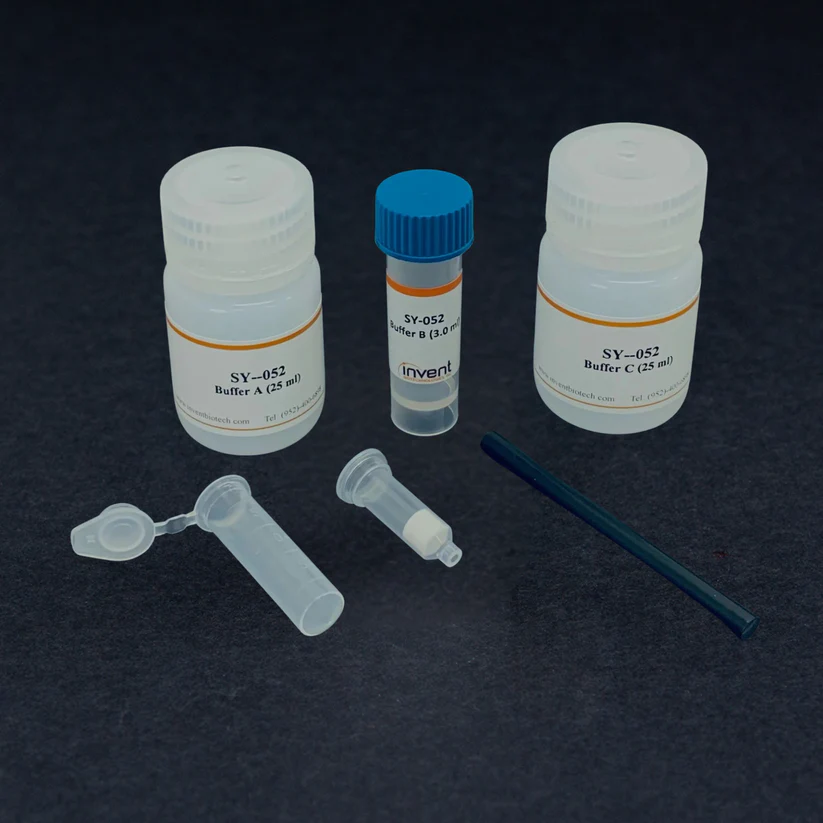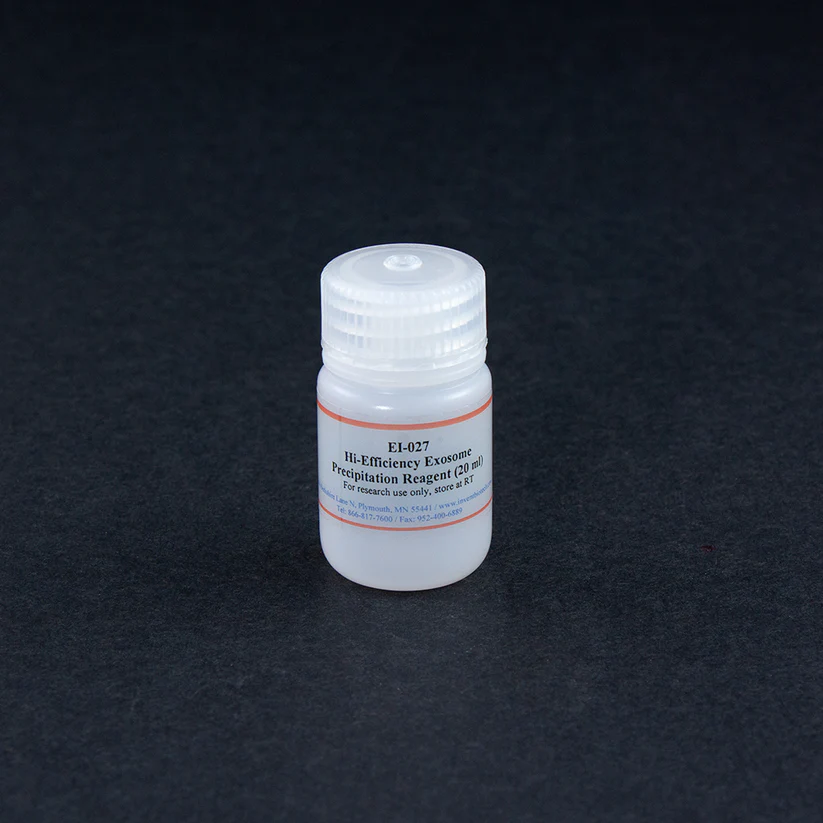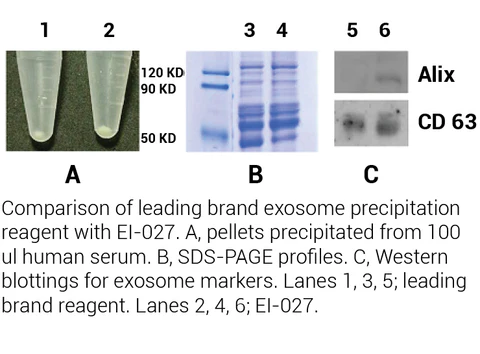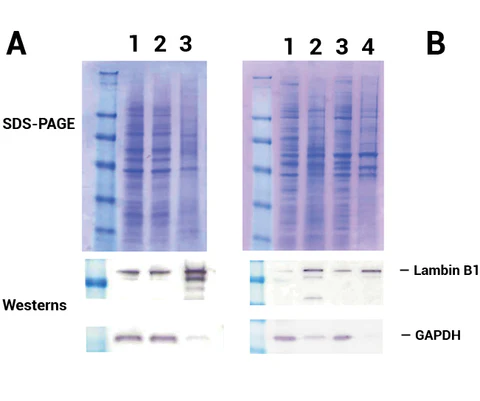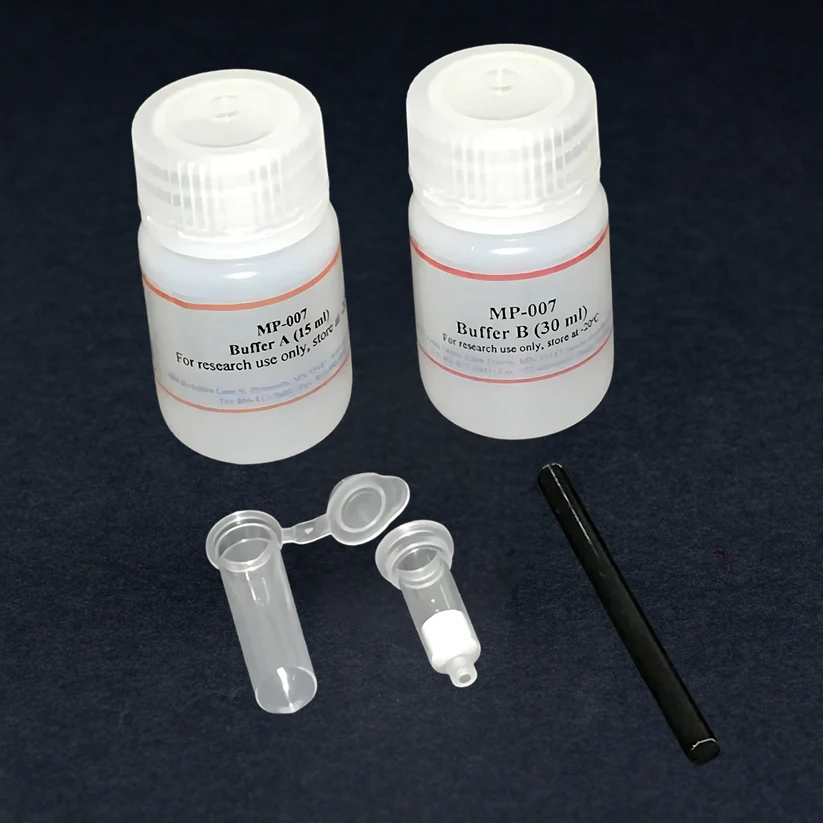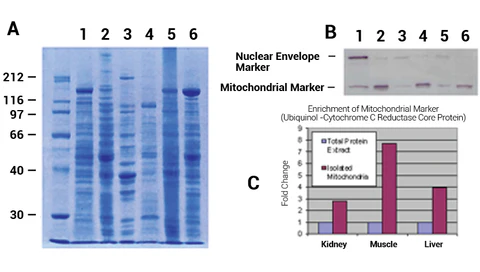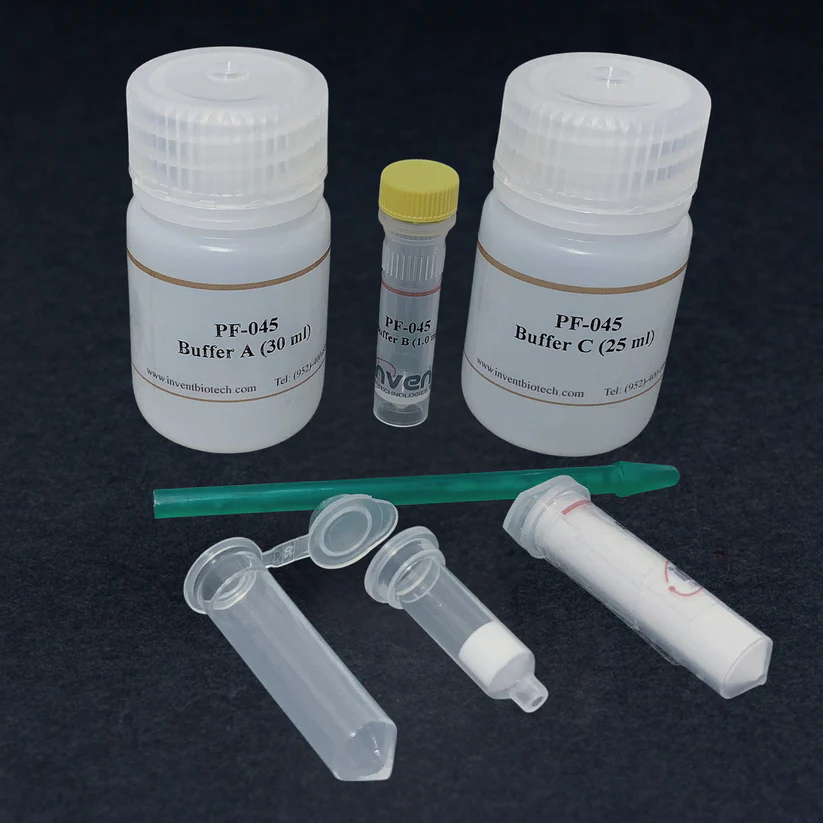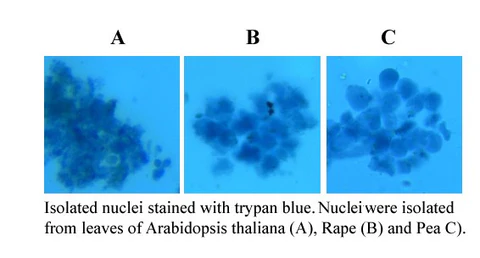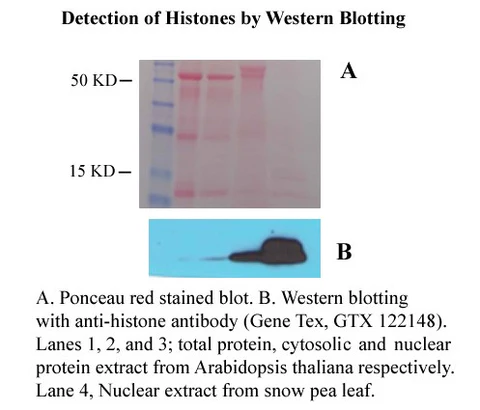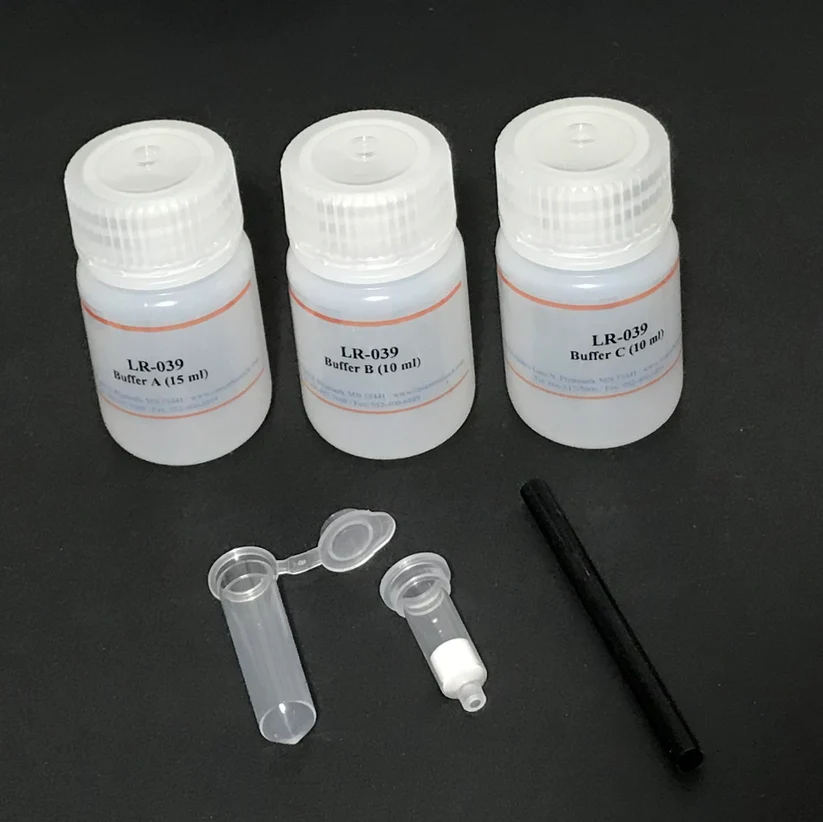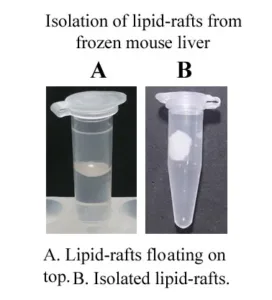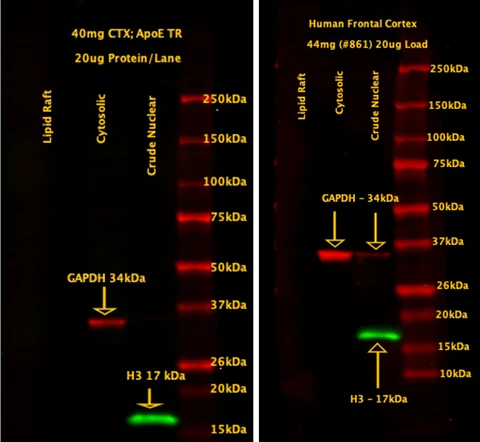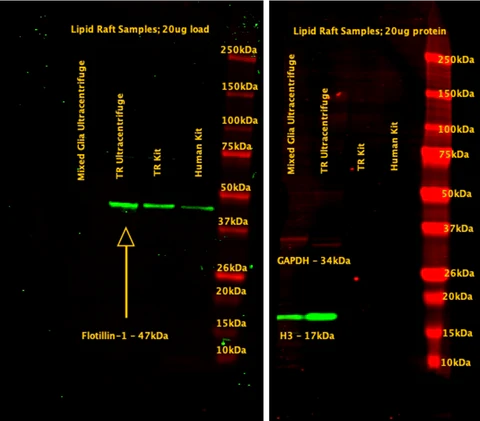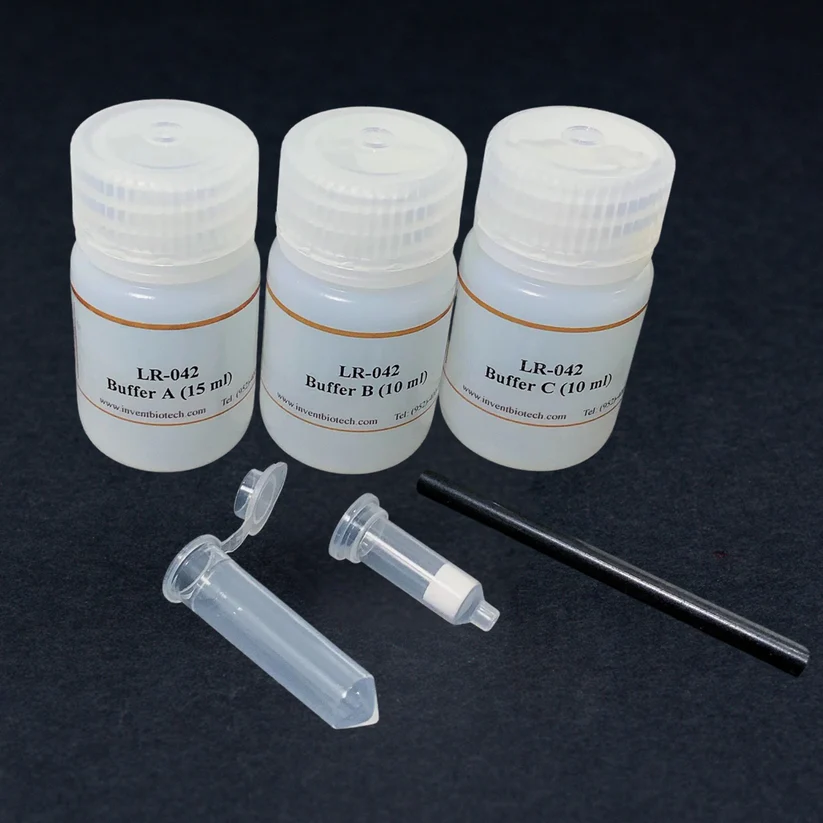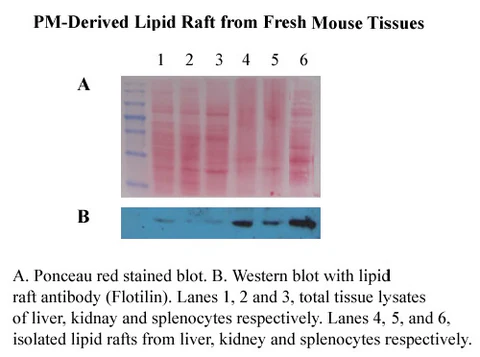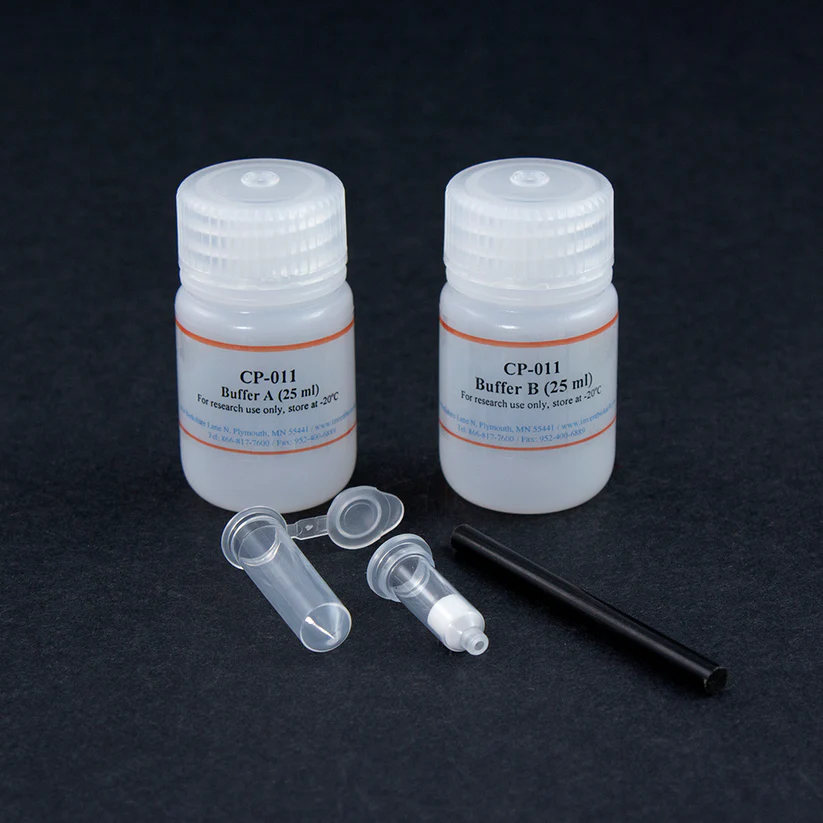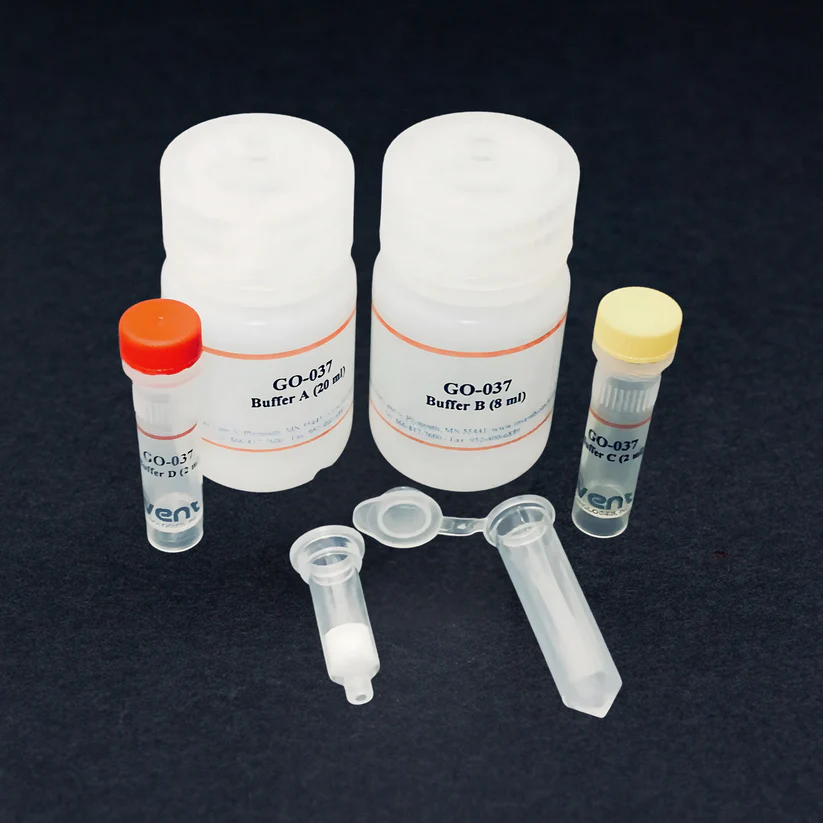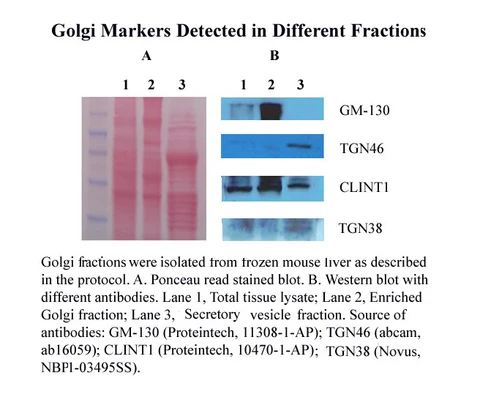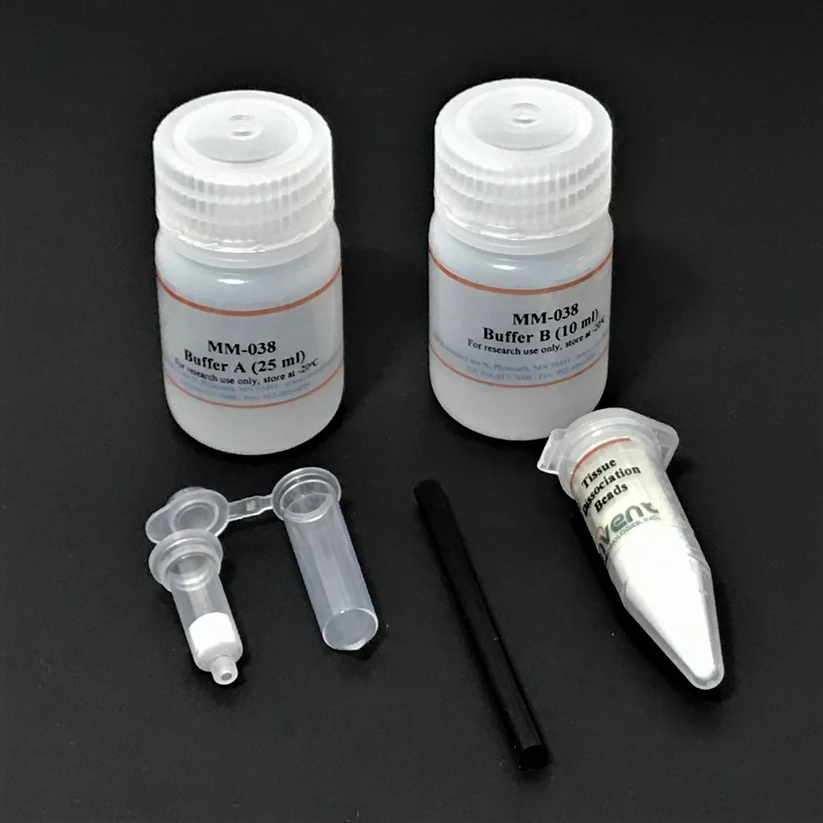
Minute™ Mitochondria Isolation Kit for Muscle Tissues/Cultured Muscle Cells (50 preps)
Cat# : MM-038
Description
Muscle cells have large number of mitochondria because they are continually used to move the body. Another mitochondrion-rich organ is the heart where mitochondria make up about 40% of the heart cells. However, isolation of mitochondria from muscle tissues can be difficult due to that fact that interfibrillar mitochondria are hidden deep among muscle fibrils. Traditional methods usually require polytron tissue disintegrator and ultracentrifuge for purification with high density medium such as Percoll gradient. This kit was developed using our proprietary technologies, making mitochondria isolation from muscles simple, rapid and user friendly. Intact mitochondria can be isolated from fresh/frozen muscle tissues in about 1h with higher yield.
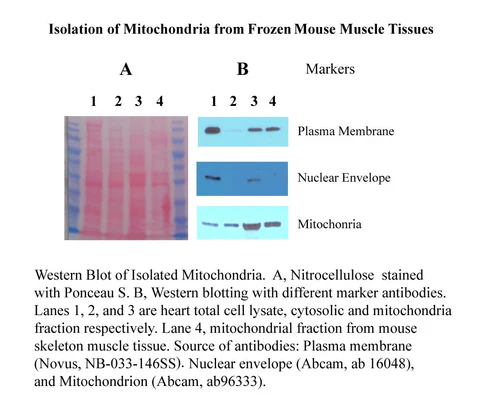
Kit includes:
Items | Quantity |
Buffer A | 25 ml |
Buffer B | 10 ml |
| Filter Cartridges | 50 units |
Collection tubes with cap (2 ml) | 50 units |
Plastic rods | 2 units |
Tissue dissociation beads | 5 grams |
References (5)
- Li, S., Dong, S., Xu, Q., Shi, B., Li, L., Zhang, W., … & Zhong, M. (2022). Sleeve Gastrectomy-Induced AMPK Activation Attenuates Diabetic Cardiomyopathy by Maintaining Mitochondrial Homeostasis via NR4A1 Suppression in Rats. Frontiers in Physiology, 13, 837798.
- Peng, L., Li, L., Fan, H., Lin, F., Liang, X., Zhu, Y., … & Sachinidis, A. (2023). Unmusking of Protein Phosphatase 2 Regulatory Subunit B as a crucial factor in the development and progression of dilated cardiomyopathy.
- Radajewska, A., Szyller, J., Krzywonos-Zawadzka, A., Olejnik, A., Sawicki, G., & Bil-Lula, I. (2023). Mitoquinone Alleviates Donation after Cardiac Death Kidney Injury during Hypothermic Machine Perfusion in Rat Model. International Journal of Molecular Sciences, 24(19), 14772.
- Seo, Y. K., Yoo, Y., Yeon, M., Kim, W. K., Shin, H. B., Lee, S. M., … & Ro, H. (2023). Age-dependent loss of Crls1 causes myopathy and skeletal muscle regeneration failure.
- Lin, F., Liang, X., Meng, Y., Zhu, Y., Li, C., Zhou, X., … & Peng, L. (2024). Unmasking Protein Phosphatase 2A Regulatory Subunit B as a Crucial Factor in the Progression of Dilated Cardiomyopathy. Biomedicines, 12(8), 1887.



